Selected Articles
Here, we present selected publications, articles and books, published by scientists of the MPI Magdeburg.
2017
Sequential bottom-up assembly of mechanically stabilized synthetic cells by microfluidics
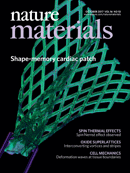
Compartments for the spatially and temporally controlled assembly of biological processes are essential towards cellular life. Synthetic mimics of cellular compartments based on lipid-based protocells lack the mechanical and chemical stability to allow their manipulation into a complex and fully functional synthetic cell. Here, we present a high-throughput microfluidic method to generate stable, defined sized liposomes termed ‘droplet-stabilized giant unilamellar vesicles (dsGUVs)’. The enhanced stability of dsGUVs enables the sequential loading of these compartments with biomolecules, namely purified transmembrane and cytoskeleton proteins by microfluidic pico-injection technology. This constitutes an experimental demonstration of a successful bottom-up assembly of a compartment with contents that would not self-assemble to full functionality when simply mixed together. Following assembly, the stabilizing oil phase and droplet shells are removed to release functional self-supporting protocells to an aqueous phase, enabling them to interact with physiologically relevant matrices.
Original Publication:
Marian Weiss, Johannes Patrick Frohnmayer, Lucia Theresa Benk, Barbara Haller, Jan-Willi Janiesch, Thomas Heitkamp, Michael Börsch, Rafael B. Lira, Rumiana Dimova, Reinhard Lipowsky, Eberhard Bodenschatz, Jean-Christophe Baret, Tanja Vidakovic-Koch, Kai Sundmacher, Ilia Platzman, Joachim P. Spatz
Sequential bottom-up assembly of mechanically stabilized synthetic cells by microfluidics
Nature Materials, 16 October 2017, DOI: 10.1038/nmat5005
Press Release (in German): Eine stabile Hülle für künstliche Zellen ...
Optimal Reactor Design via Flux Profile Analysis for an Integrated Hydroformylation Process
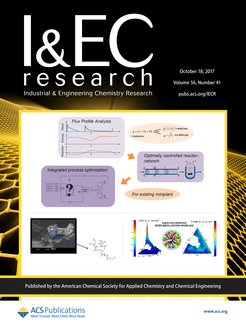
Highlight on the Cover of Issue 56 of Industrial & Engineering Chemical Research
Different operational modes, various scales, and complex phenomena make the design of a chemical process a challenging task. Besides conducting basic lab experiments and deriving fundamental kinetic and thermodynamic models, a crucial task within the entire process design is the synthesis of an optimal reactor-network constituting the core of a chemical process. However, instead of directly up-scaling the process to large devices, it is wise to investigate process characteristics on the miniplant scale. For an existing miniplant for the hydroformylation of 1-dodecene using a rhodium catalyst and a thermomorphic solvent system for catalyst recovery, two optimized reactor designs are derived. Suitable reactor-networks were synthesized by applying the Flux Profile Analysis approach introduced in Kaiser et al. (2017). The combination of a first reactor with dynamic/distributed control options and a subsequent back-mixed continuous stirred tank reactor (CSTR) arose to be the most promising configurations. The technical design under miniplant conditions was carried out for two possible realizations of this network, namely (i) a continuous flow reactor and (ii) a periodically operated semibatch reactor, both followed by the existing CSTR which was originally operated in the miniplant. An optimization of the two optimal reactor configurations within an overall process including a liquid–liquid phase separation for catalyst recovery and a distillation column for separating the solvents and reactant evinced a selectivity with respect to the linear aldehyde around 94% and a conversion around 98%. This is a large improvement of the process performance of 24% linear aldehyde selectivity and 40% conversion when using the existing CSTR.
Original Publication:
Nicolas M. Kaiser, Michael Jokiel, Kevin McBride, Robert J. Flassig, and Kai Sundmacher
Optimal Reactor Design via Flux Profile Analysis for an Integrated Hydroformylation Process
I&EC Research, 2017, 56 (40), pp 11507–11518, 18 October 2017, DOI: 10.1021/acs.iecr.7b01939
A Cell-Autonomous Mammalian 12 hr Clock Coordinates Metabolic and Stress Rhythms
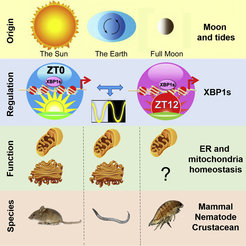
Besides circadian rhythms, oscillations cycling with a 12 hr period exist. However, the prevalence, origin, regulation, and function of mammalian 12 hr rhythms remain elusive. Utilizing an unbiased mathematical approach identifying all superimposed oscillations, we uncovered prevalent 12 hr gene expression and metabolic rhythms in mouse liver, coupled with a physiological 12 hr unfolded protein response oscillation. The mammalian 12 hr rhythm is cell autonomous, driven by a dedicated 12 hr pacemaker distinct from the circadian clock, and can be entrained in vitro by metabolic and ER stress cues. Mechanistically, we identified XBP1s as a transcriptional regulator of the mammalian 12 hr clock. Downregulation of the 12 hr gene expression strongly correlates with human hepatic steatosis and steatohepatitis, implying its importance in maintaining metabolic homeostasis. The mammalian 12 hr rhythm of gene expression also is conserved in nematodes and crustaceans, indicating an ancient origin of the 12 hr clock. Our work sheds new light on how perturbed biological rhythms contribute to human disease.
Original Publication:
Bokai Zhu, Qiang Zhang, Yinghong Pan, Emily M. Mace, Brian York, Athanasios C. Antoulas, Clifford C. Dacso, Bert W. O’Malley
A Cell-Autonomous Mammalian 12 hr Clock Coordinates Metabolic and Stress Rhythms.
Cell Metabolism, Volume 25, Issue 6, pp. 1305–1319.e9, 6 June 2017
DOI: 10.1016/j.cmet.2017.05.004
Non-equimolar discrete compounds in binary chiral systems of organic substances
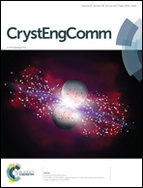
CrystEngComm Highlight Article
Since knowledge on the occurrence of non-equimolar discrete compounds in binary systems containing chiral molecules is very limited, this study reviews and systematizes the current state of investigating such systems and summarizes the results on two example systems studied in detail by the authors.
In particular, the identification and verification of the non-equimolar discrete compounds compared to other discrete solid phases occurring in the two systems are discussed by presenting the results of related SCXRD, PXRD, TRPXRD, DSC, IR, and HSM studies. The (S)-malic acid–(R)-malic acid system has been found to contain non-equimolar 1 :
: 3 and 3
3 and 3 :
: 1 stable (S3R and SR3) and metastable (3S1R and 1S3R) discrete compounds, along with the equimolar compounds RSI and RSII (known monoclinic modifications) and the recently discovered RSIII modification.
1 stable (S3R and SR3) and metastable (3S1R and 1S3R) discrete compounds, along with the equimolar compounds RSI and RSII (known monoclinic modifications) and the recently discovered RSIII modification.
Polymorphic transformations of the discrete phases are debated, and the crystal structure of the stable compound S3R is identified (S. G. P1). The L-valine–L-isoleucine system has been stated to contain a non-equimolar 2 :
: 1 discrete compound, V2I, that could independently be proven by the ternary solubility diagram in water and its crystal structure solved (S. G. C2). The results obtained are discussed in conjunction with the findings reported in the literature. In order to systematize the variety of terms used for the description of discrete phases in binary chiral systems of organic substances, a systematization of equimolar and non-equimolar compounds based on chemical and crystallographic characteristics is proposed.
1 discrete compound, V2I, that could independently be proven by the ternary solubility diagram in water and its crystal structure solved (S. G. C2). The results obtained are discussed in conjunction with the findings reported in the literature. In order to systematize the variety of terms used for the description of discrete phases in binary chiral systems of organic substances, a systematization of equimolar and non-equimolar compounds based on chemical and crystallographic characteristics is proposed.
Original publication:
Model Reduction and Approximation: Theory and Algorithms
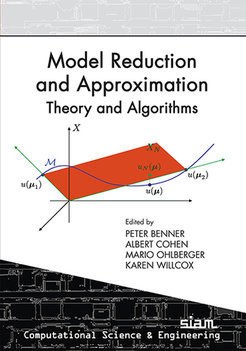
Many physical, chemical, biomedical, and technical processes can be described by partial differential equations or dynamical systems. In spite of increasing computational capacities, many problems are of such high complexity that they are solvable only with severe simplifications, and the design of efficient numerical schemes remains a central research challenge. This book presents a tutorial introduction to recent developments in mathematical methods for model reduction and approximation of complex systems.
Model Reduction and Approximation: Theory and Algorithms
- contains three parts that cover (I) sampling-based methods, such as the reduced basis method and proper orthogonal decomposition, (II) approximation of high-dimensional problems by low-rank tensor techniques, and (III) system-theoretic methods, such as balanced truncation, interpolatory methods, and the Loewner framework;
- is tutorial in nature, giving an accessible introduction to state-of-the-art model reduction and approximation methods; and
- covers a wide range of methods drawn from typically distinct communities (sampling based, tensor based, system-theoretic).
Original publication:
Peter Benner, Albert Cohen, Mario Ohlberger, and Karen Willcox (Eds.)
Model Reduction and Approximation: Theory and Algorithms
SIAM Publications, Philadelphia, PA, 2017.
ISBN: 978-1-611974-81-2
System Reduction for Nanoscale IC Design
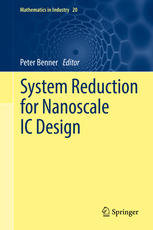
This book describes the computational challenges posed by the progression toward nanoscale electronic devices and increasingly short design cycles in the microelectronics industry, and proposes methods of model reduction which facilitate circuit and device simulation for specific tasks in the design cycle.
The goal is to develop and compare methods for system reduction in the design of high dimensional nanoelectronic ICs, and to test these methods in the practice of semiconductor development. Six chapters describe the challenges for numerical simulation of nanoelectronic circuits and suggest model reduction methods for constituting equations. These include linear and nonlinear differential equations tailored to circuit equations and drift diffusion equations for semiconductor devices. The performance of these methods is illustrated with numerical experiments using real-world data. Readers will benefit from an up-to-date overview of the latest model reduction methods in computational nanoelectronics.
Original publication:
Peter Benner
System Reduction for Nanoscale IC Design
Springer International Publishing AG. 2017.
DOI: 10.1007/978-3-319-07236-4





